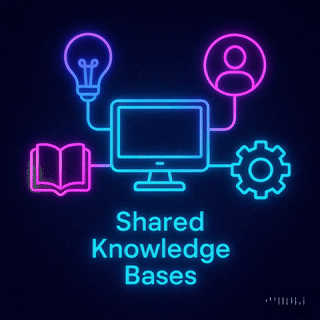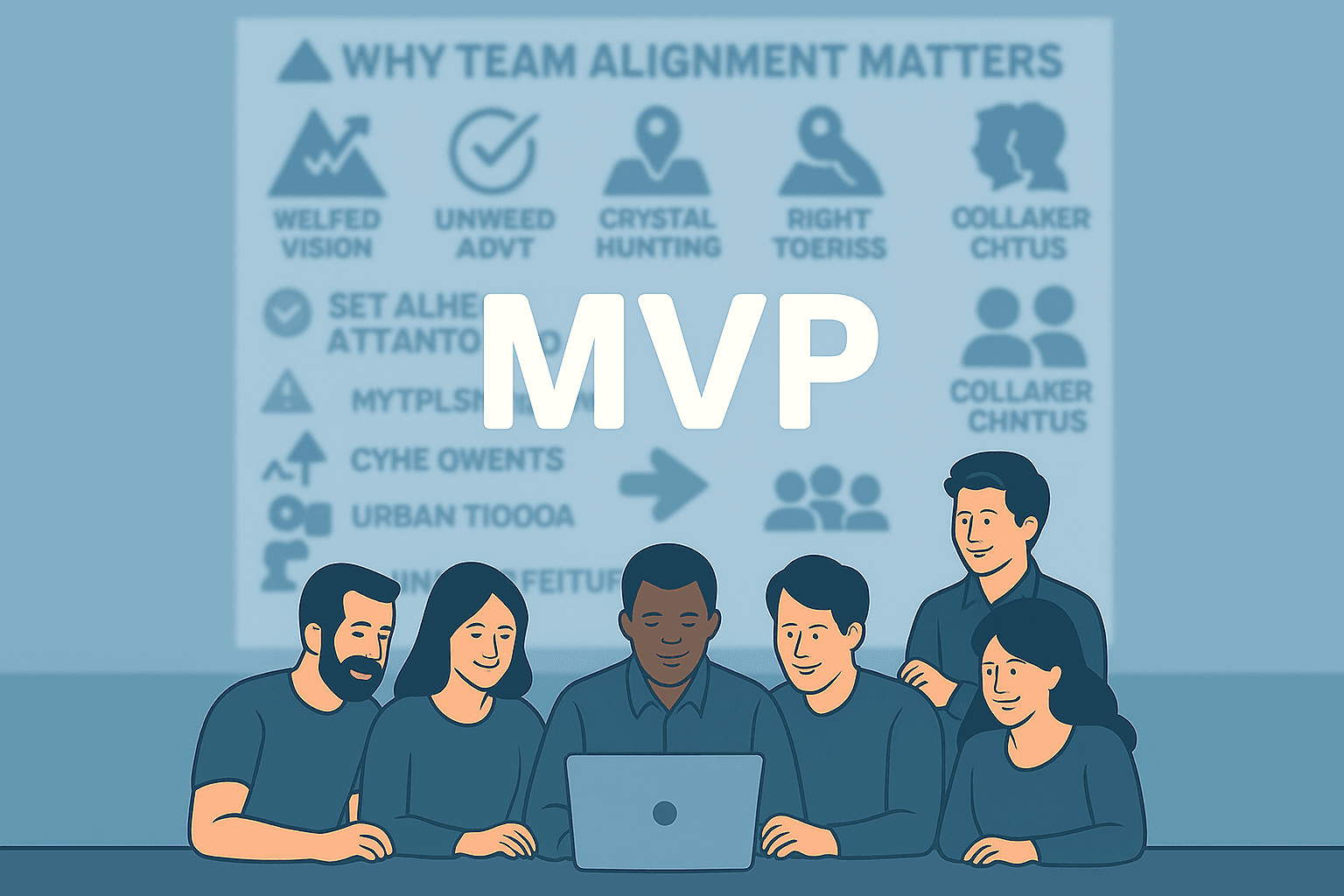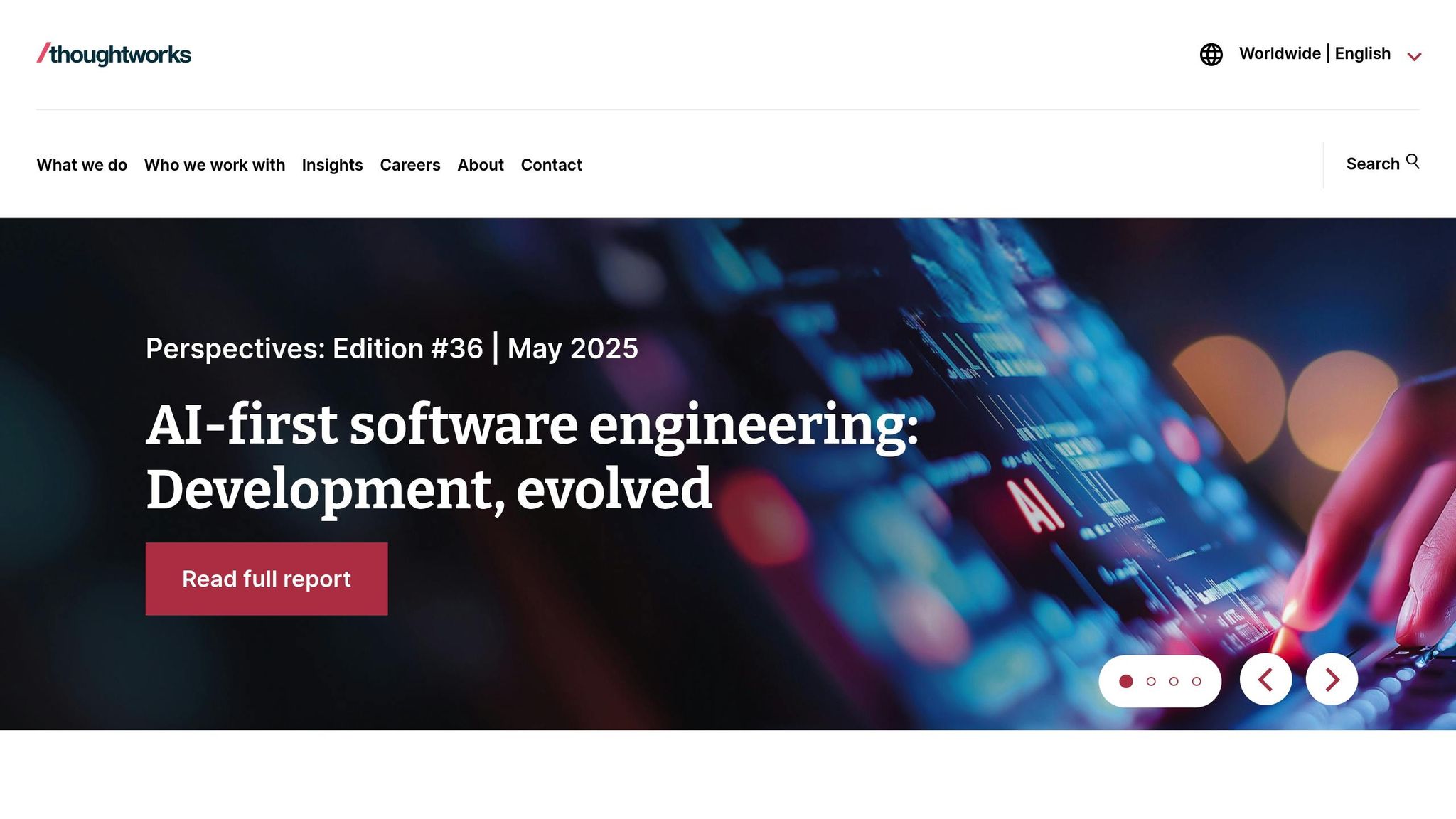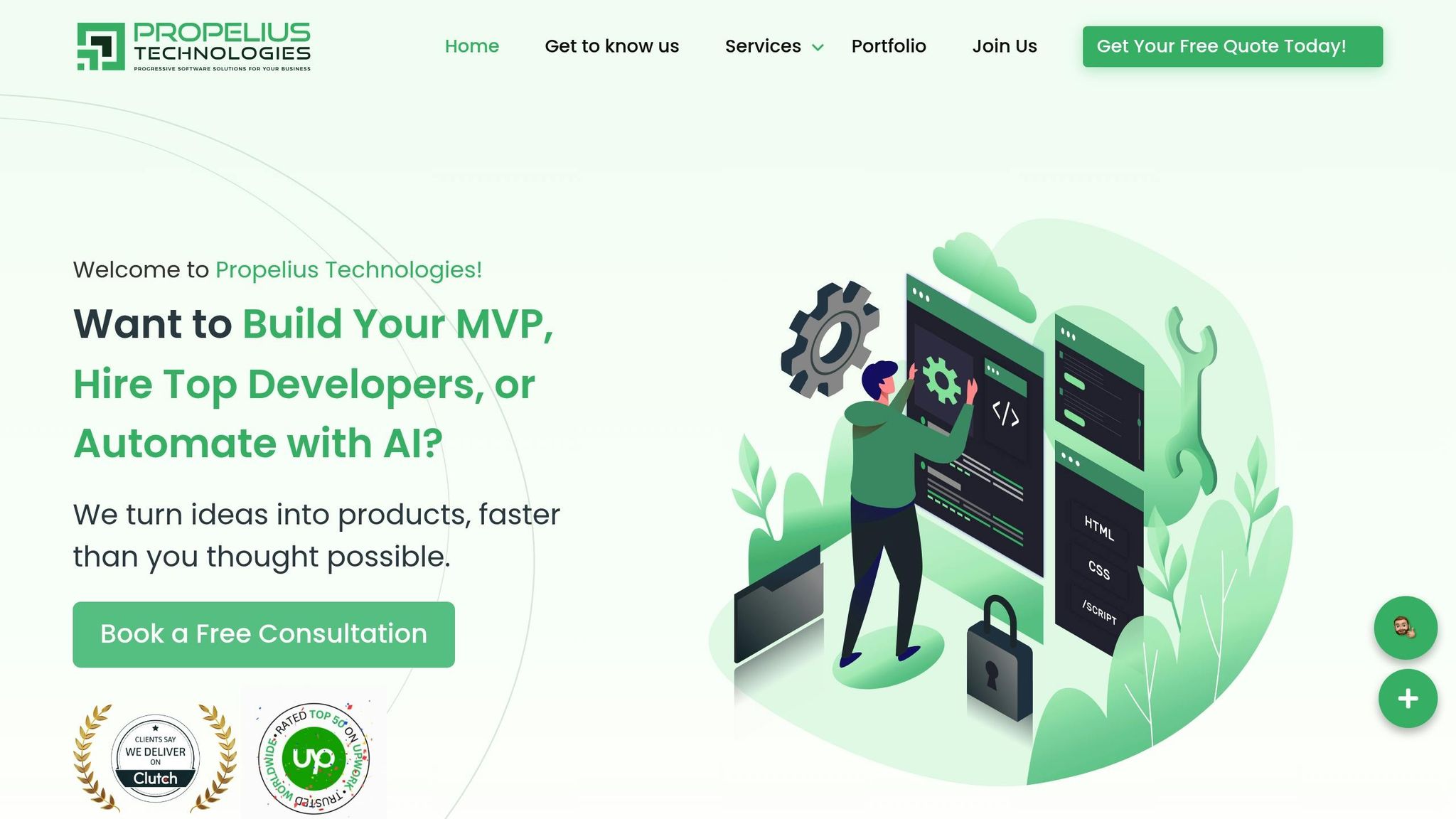
Tenant Data Isolation: Patterns and Anti-Patterns
Explore effective patterns and pitfalls of tenant data isolation in multi-tenant systems to enhance security and compliance.
Jul 30, 2025
Read More
Want to deliver MVPs faster and with fewer issues? Start by aligning your team. Misaligned teams can lead to delays, rework, and even project failure. But when teams collaborate effectively, MVP sprints are 25% faster, 20% more creative, and produce 35% higher customer satisfaction.
Here’s how to align your team for MVP success:
Aligned teams don’t just build better MVPs - they build them faster and with fewer defects. Let’s dive into these strategies to transform your MVP sprints into engines of execution.

Every successful MVP sprint begins with a clear and unified understanding of what needs to be built and why. Without this clarity, even the best teams can end up working in different directions - developing features that don’t meet user needs or overlooking critical dependencies that can derail the timeline.
A shared vision ensures that everyone on the team understands the problem, the target audience, and the metrics for success. This shared understanding empowers teams to make informed decisions independently while staying aligned, even when priorities shift.
The best MVP visions start with a well-defined problem statement and a specific hypothesis about how your solution addresses real user needs. It’s not enough to aim for broad goals like "improving user experience." Instead, focus on identifying whose problem you're solving and how success will be measured.
Clearly articulating the problem and solution helps target genuine user needs. This goes beyond market research - it’s about fostering empathy within your team for the people you’re building for. When teams truly understand their audience, they can create products that resonate on a deeper level.
To achieve alignment, consider running a mini vision sprint. This collaborative exercise brings stakeholders together to brainstorm solutions, prioritize ideas, and establish a focused vision. Once the vision is set, feature slicing and incremental development can help break the product into manageable pieces, allowing for faster delivery. Be ruthless about scope - identify the absolute minimum set of features needed to validate your core hypothesis. Tools like user story maps or flowcharts can help visualize the MVP, showing not just what’s being built but also how users will interact with it.
By setting clear objectives and focusing on the essentials, every feature added to the MVP will bring the team closer to realizing the ultimate vision.
One common pitfall in traditional organizations is relying on siloed metrics. Developers might track code coverage and commit frequency, designers might focus on visual consistency, and product teams might prioritize delivery timelines. While these metrics have value, they can create misaligned goals, where departmental success overshadows the bigger picture.
Shared KPIs shift the focus to collective outcomes, encouraging teams to work together toward delivering user value and achieving business results. Instead of measuring individual contributions, shared KPIs emphasize whether the combined effort is creating meaningful impact.
| Traditional Siloed Metrics | Collaborative Shared KPIs |
|---|---|
| Developers: Code coverage, commit frequency | All Teams: Feature adoption rates |
| Designers: Visual consistency, UI completeness | All Teams: User satisfaction scores |
| Product: Feature delivery timelines | All Teams: Customer retention metrics |
| QA: Bugs identified | All Teams: Escaped defect rates |
The benefits of this approach are clear. Teams that embrace collaboration deliver products 25% faster than siloed counterparts. They also produce 20% more creative solutions and reduce critical defects by 30% through early detection. Products developed by integrated teams achieve 35% higher customer satisfaction ratings.
Outcome-based KPIs inspire teams to think creatively and work collaboratively, with every role contributing to user satisfaction and product quality. This shared accountability fosters stronger team dynamics and better results.
"Efficiency is doing things right; effectiveness is doing the right things." - Peter Drucker
To implement shared KPIs effectively, focus on metrics that promote teamwork. For example, measuring time-to-value for new users requires seamless coordination between design, development, and product teams. This ensures everyone is working together to achieve meaningful outcomes.
With a shared vision and KPIs in place, a centralized product roadmap becomes essential to keep teams aligned during the fast-paced MVP sprint process.
Once the vision and KPIs are defined, a centralized roadmap serves as the anchor that keeps everyone on the same page. This roadmap acts as a single source of truth, connecting short-term tasks to long-term goals. It helps teams stay focused on high-impact initiatives and prevents wasted effort.
A well-structured roadmap provides clarity for all stakeholders, from executives to engineers. It outlines the product’s direction, facilitates communication, and ensures everyone understands the goals, timelines, and potential challenges. When teams work cohesively, the entire organization moves more efficiently toward shared objectives.
Each feature on the roadmap should be tied to a strategic purpose, with clear goals and metrics for success. When team members understand not just what they’re building but also why it matters, they’re better equipped to navigate unexpected challenges and stay motivated.
The roadmap should be treated as a living document that evolves as new information emerges. Regular updates allow the team to adapt to changing market conditions, customer needs, and stakeholder feedback. This flexibility is critical during MVP sprints, where rapid iteration is key.
"When you view a project or task in isolation, it's easy to think: This seems important; we should do this now. When you turn all of those ideas and tasks into physical objects that you move around on a timeline, your priorities become much more clear." - Ryan Nee, Product Manager and Principal Designer for Templates at Mural
To maximize the roadmap’s impact, link each item to a business goal or OKR. Share updates in team channels whenever changes occur, and schedule regular check-ins with core teams to review dependencies and adjust priorities. Mark each item’s status clearly, and encourage team members to provide feedback, fostering transparency and ongoing dialogue.
Once the vision and roadmap are set, it's crucial to ensure that design, development, and QA teams work together seamlessly. Poor workflow coordination is one of the biggest reasons MVP launches get delayed. When teams operate on separate timelines or wait for full handoffs, bottlenecks can disrupt even the most carefully planned sprints.
To avoid this, you need intentional planning, staggered timelines, and clear handoff protocols. The goal is to create a steady rhythm where each team's output flows smoothly into the next phase without causing delays or unnecessary rework. Below are strategies to help align every sprint phase for smoother collaboration.
Traditional waterfall methods often fall short in the fast-paced environment of MVP sprints. Instead, overlapping design, development, and QA processes can help maintain momentum. Teams that succeed tend to adopt workflows where design stays ahead of development, and QA is integrated throughout the process rather than being tacked on at the end.
The key is establishing a synchronized sprint cadence with predictable handoff points. When teams align their schedules with the overall release timeline, it creates a dependable rhythm for the entire project. This approach reduces the chaos of unexpected requests and last-minute changes that can derail cross-functional work.
For example, adopting a design-ahead approach ensures developers always have approved assets to work with, while integrating QA early helps catch issues before they snowball. One startup team, after an initial Lean Inception workshop, used Sprint 3 to finalize the design for a key feature - the Parent Competency Assessment - so it was ready for Sprint 4 planning.
To make synchronized timelines work, involve the entire team in planning and include buffer time for unforeseen challenges. Once timelines are aligned, the focus can shift to how design assets are delivered.
Waiting for perfect designs can slow down progress. Successful MVP teams focus on delivering design assets incrementally, allowing development and QA to move forward in parallel. At this stage, designs only need to be functional enough to validate the core assumptions, with refinements made later based on user feedback.
Design teams should work one to two sprints ahead, delivering wireframes, prototypes, or user flows that evolve with ongoing input. Establishing a clear "Definition of Ready" for design assets helps prevent confusion and rework. This definition should include approved user flows, interactive prototypes, detailed interaction specs, accessibility considerations, and adherence to style guides.
Prioritize the most critical user flows and high-impact features first, leaving less essential UI elements for later sprints. For instance, a team using a rolling-wave approach delivered wireframes and prototypes in stages, validating core user flows while making rapid iterations.
By planning designs in waves and involving designers in sprint rituals, teams can keep design and development aligned throughout the project.
With workflows synchronized and design delivery staged, clearly defining roles and communication protocols becomes essential. Cross-functional teams often face delays due to unclear responsibilities. When everyone knows their role and whom to contact for specific issues, teams can work faster and avoid missteps.
Assign responsibilities clearly to prevent tasks from slipping through the cracks. Team members should understand not just their own roles but also how their work contributes to the larger project. This shared understanding creates natural checkpoints for addressing potential problems early.
Set up efficient communication protocols by designating primary channels and establishing expectations for availability and response times. Differentiate between issues that need immediate attention and those that can wait for asynchronous follow-up to help teams prioritize effectively.
Escalation paths are equally important. Define clear procedures for dealing with technical blockers, scope changes, or resource conflicts to minimize delays.
Public commitments during sprint planning foster accountability and ownership. Regular cross-functional ceremonies - like daily standups, sprint planning, and retrospectives - help teams refine their collaboration processes. Agile practices, with their focus on flexibility and iterative progress, are especially valuable for remote or distributed teams.
Once you've established structured workflows and clear roles, the next step is to integrate tools that bring your team together. Even the most organized workflows can falter without the right tools in place. In fact, the success of many MVP teams often hinges on how effectively they use technology to promote transparency and coordination. With remote work becoming increasingly common, having a reliable toolkit isn't just helpful - it's essential for keeping everyone on the same page and productive.
The secret lies in selecting tools that work together effortlessly. When tools are integrated, they minimize the need for constant context switching, which can drain productivity. By aligning your tools with your team's workflow, you create a smooth, unified system that supports the rhythm of your sprints.
Transparency starts with a solid communication stack. This includes tools for real-time messaging, video calls, and asynchronous communication. Each serves a unique purpose in keeping your team connected, creating a digital workspace where information flows naturally and efficiently.
For task management and sprint tracking, platforms like Jira, Trello, and Asana are invaluable. They allow teams to visualize progress, assign tasks, and manage timelines effectively. On the development side, version control tools like Git, GitHub, and GitLab are indispensable for managing code changes and enabling seamless code reviews. To put it into perspective, GitHub reported over 100 million developers using its services in 2023, highlighting its role as a cornerstone of collaboration in software development.
When it comes to design, tools like Figma and InVision shine. They enable real-time collaboration on UI/UX designs, letting developers inspect designs, extract assets, and provide feedback quickly. For brainstorming and mapping out ideas, virtual whiteboarding platforms like Miro and MURAL are excellent for fostering creativity and teamwork.
By choosing tools that integrate well and fit your team’s workflow, you create a cohesive workspace that supports every phase of MVP development.
While collaboration tools ensure transparency, balancing real-time and asynchronous communication is equally important. Distributed teams thrive when they find the right mix of immediate responses and thoughtful, time-shifted communication. Asynchronous tools give team members the flexibility to work at their own pace, while real-time tools are critical for urgent matters and in-depth discussions.
Setting clear expectations helps maintain this balance. For instance, you might establish a guideline for responding to non-urgent messages within 24 hours during workdays. Asynchronous tools like email, project management platforms, and collaboration apps allow for deliberate, well-thought-out responses. Meanwhile, real-time tools such as Zoom and Google Meet are perfect for quick problem-solving and complex conversations.
To ensure nothing gets lost, document key decisions in a central location. Encouraging flexibility in response times and fostering open, honest communication helps build trust. Clearly defining how and when to use different communication channels ensures smoother coordination across the board.
While asynchronous communication handles daily tasks, regular cross-functional check-ins are essential for aligning on broader goals and tackling potential problems before they grow. These meetings provide a chance to review progress, address challenges, and adjust plans as needed.
Take, for example, a leading streaming platform that restructured its teams into cross-functional groups. Each team included developers, designers, product managers, and QA engineers, all working together on specific feature areas. This approach led to impressive results: a 40% faster time-to-market for new features, a 35% boost in first-time quality metrics, a 25% rise in employee satisfaction, and a 30% decrease in coordination meetings.
By focusing on shared outcomes rather than isolated departmental goals, teams can strengthen collaboration. For instance, collaborative backlog refinement ensures technical, design, and business needs are all considered.
| Communication Practice | Implementation Approach | Benefit to Cross-Functional Teams |
|---|---|---|
| Daily stand-ups | Include representatives from all disciplines | Immediate visibility into cross-functional dependencies |
| Sprint planning | Joint estimation sessions with developers, designers, and PMs | Realistic timelines that account for varied work |
| Demo sessions | Present progress to a cross-functional audience | Diverse feedback before release |
| Backlog refinement | Collaborative requirement development | Balanced technical, design, and business considerations |
For these check-ins to be effective, they need clear agendas and consistent schedules. When structured properly, they allow team members to prepare in advance, share updates, and collaborate without overloading their calendars with unnecessary meetings.
While tools are essential, the real magic of successful MVP sprints lies in fostering a culture of respect and shared goals. A collaborative team culture transforms the process from a simple sequence of tasks into a unified effort. When developers grasp the nuances of the designer's process, product managers understand the technical hurdles engineers face, and QA testers are fully integrated, the entire team becomes more efficient. This mindset creates a shared journey rather than isolated handoffs.
Creating such a culture takes intentional effort, especially in remote or hybrid work settings. It’s about building an environment where team members feel safe to share ideas, admit mistakes, and ask for help. MVP teams understand that technical expertise alone isn’t enough - strong human connections are the driving force behind innovation. This foundation helps teams achieve deeper understanding across roles and fosters continuous growth.
Trust within a team starts with understanding. When team members gain insight into each other's work and challenges, they can better appreciate their contributions. Direct exposure to different roles is one of the most effective ways to build this understanding.
Recognizing achievements keeps motivation high, especially during the fast-paced world of MVP development. Celebrations reinforce the sense of shared ownership that helps teams stay aligned through tough challenges. The key is to celebrate both individual efforts and collective wins in a way that feels genuine to the team.
Continuous improvement is the glue that keeps teams aligned and evolving. Feedback loops help identify what’s working, address pain points, and strengthen collaboration. The aim isn’t perfection but creating a system where teams get better with every sprint.
"Generally speaking, you want as short a feedback loop as possible, so you can adapt your process quickly." – Henrik Kniberg and Mattias Skarin, Kanban and Scrum: Making the Most of Both
Teams that embrace feedback as a tool for growth create an environment where it feels natural to share concerns and act on them. Over time, this approach becomes a core part of how the team works and evolves together.

Creating well-aligned teams for MVP sprints takes more than just good intentions - it demands the right partnerships and proven processes. Propelius Technologies tackles the common challenges of team alignment with two tailored engagement models, each designed to address the sticking points that can derail MVP projects.
With over a decade of startup leadership experience in the San Francisco Bay Area and a track record of delivering more than 100 successful projects, Propelius has fine-tuned its approach. Their expertise spans modern tech stacks like React.js, Node.js, Supabase, Firebase, and others, ensuring teams stay in sync from the initial design phase all the way to deployment.
The Turnkey Delivery model simplifies alignment by offering a fully integrated, cross-functional team. Instead of juggling multiple vendors - like design agencies, development firms, and QA providers - clients work with a single, cohesive unit that operates with shared goals, timelines, and communication practices.
This fixed-price structure eliminates the headaches of scope creep and budget surprises, letting the team focus solely on delivering quality results.
"Propelius Technologies has been a fantastic tech partner. The team is super responsive, skilled, and professional in their approach. They understood our requirements perfectly and delivered beyond expectations. Their dedication, timely delivery, and support throughout the project truly set them apart. Highly recommended!"
– Andreas Sohns, CEO
The process is built around collaboration and transparency. Designers and developers work hand-in-hand, ensuring that user research and technical implementation are tightly connected. Instead of relying on static mockups handed off in isolation, the approach is iterative and agile. In fact, agile development practices have been shown to improve project success rates by 28% compared to traditional waterfall methods.
Joining an existing team isn’t always smooth sailing, but the Developer-for-Hire model makes it easier. Propelius integrates pre-vetted developers - often top graduates from leading universities - directly into your team’s workflows and culture. These experts require no onboarding, so they can start contributing right away.
"Working with Propelius Technologies has been a great experience. The team is highly skilled, professional, and very easy to communicate with. They understood our vision perfectly and delivered a quality product on time. Truly impressed with their dedication and client-first approach."
– Rafael Lião
This model offers flexibility with hourly billing, allowing you to scale development resources as needed or bring in specialized skills for specific tasks. Whether working with React, Node.js, or AI tools like Cursor, Lovable, and Replit, these developers enhance collaboration across all layers of your application. This approach also lays the groundwork for Propelius' 90-Day MVP Sprint, where alignment becomes even more critical.
Propelius’ flagship 90-Day MVP Sprint combines a fixed-price model with an aggressive timeline, creating a shared-risk structure: 50% payment upfront and 50% upon delivery. To emphasize the importance of meeting deadlines, weekly delay discounts of 10% - up to 50% - are built into the agreement.
"Working with Propelius Technologies has been an exceptional experience. Their team is highly professional, technically strong, and committed to delivering quality solutions on time. They understand our requirements perfectly and always go the extra mile to ensure satisfaction. Highly recommended for any tech project!"
– Chaitanya Laxman, CEO
The sprint is designed to keep every aspect of the project aligned - scope, budget, and timeline are all clearly defined. From full-stack development and UI/UX design to QA testing and post-launch support, the 90-Day MVP Sprint ensures seamless collaboration from start to finish. This alignment extends beyond deployment, providing a foundation for early user feedback and continuous improvement.
The success of MVP sprints hinges on team alignment. By applying the strategies covered in this guide, cross-functional teams can work together seamlessly, achieving results up to 25% faster than those operating in silos.
It all begins with a shared vision and clearly defined scope. Using tools like the MoSCoW framework helps prioritize essential features, avoiding unnecessary distractions and keeping the focus squarely on delivering the core functionality within the set timeline.
Strong communication practices are the glue that holds everything together. Daily stand-ups, centralized project management tools, and regular check-ins ensure everyone stays on the same page. As Tony Camacho from Easy Agile explains:
"Alignment isn't just about goals - it's about understanding each other's workflows, needs, and challenges to create solutions that work for everyone".
Well-structured workflows with synchronized timelines and clearly assigned roles prevent confusion and maintain momentum. For instance, when designers deliver assets in phases and developers are aware of dependencies early on, teams iterate faster and produce 20% more innovative solutions by blending diverse perspectives.
The human side of alignment - trust, milestone celebrations, and feedback loops - is equally important. Teams that handle conflicts constructively and foster psychological safety see a 35% boost in customer satisfaction ratings. These cultural practices keep teams aligned, even when challenges arise.
Optimizing resources through smart team management and task tracking also plays a key role. Cross-functional collaboration significantly reduces redundant work - by as much as 40% - through shared knowledge and streamlined efforts. This efficiency allows teams to focus on delivering impactful results.
By implementing these strategies, teams can transform MVP sprints from chaotic efforts into well-oiled machines. When developers, designers, and product managers align around shared KPIs, centralized roadmaps, and open communication, sprints become engines of focused execution that drive meaningful outcomes.
Whether you're tackling your first MVP or refining your sprint process, these alignment techniques can help turn ambitious goals into tangible milestones. The result? Better products, happier teams, and greater user adoption.
A clear vision and specific goals ensure that every team member stays on the same page, cutting down on confusion and encouraging teamwork during MVP sprints. This shared understanding makes decision-making smoother, keeps the team focused on what truly matters, and allows for quick adjustments when needed - helping to move the process along faster.
When everyone is working toward the same objective, it’s easier to maintain momentum and create an MVP that aligns more closely with user needs and expectations. This alignment also reduces unnecessary work, ensuring resources are used efficiently to reach the desired results.
To keep design, development, and QA teams working together smoothly during MVP sprints, prioritize clear communication and teamwork. Incorporating daily stand-ups and sprint reviews can make a big difference. These practices ensure everyone stays in the loop about progress and can tackle any obstacles right away. Using architecture decision records to document key choices also helps prevent confusion and keeps everyone aligned on shared goals.
Another key strategy is embracing an iterative planning process with regular feedback loops. This method allows teams to respond to changes effectively while keeping all departments synchronized throughout the sprint. By focusing on open communication and adaptability, you can establish a workflow that keeps everything running smoothly and sets the stage for a successful MVP launch.
Collaboration tools like Jira, Figma, and GitHub are essential for keeping teams in sync during MVP development. They streamline communication, boost visibility, and make coordination smoother.
Take Jira, for instance - it links design prototypes from Figma directly to development tasks. This ensures that designs and implementation stay consistent and clear. Meanwhile, GitHub's integration with Jira lets developers track issues, automate updates, and work together effortlessly. By using these tools, teams can cut down on miscommunication, reduce the need to constantly switch contexts, and maintain transparency. The result? Cross-functional teams can focus on working efficiently to deliver a strong MVP.
Need an expert team to provide digital solutions for your business?
Book A Free CallDive into a wealth of knowledge with our unique articles and resources. Stay informed about the latest trends and best practices in the tech industry.
View All articlesGet in Touch
Let's Make It Happen
Get Your Free Quote Today!

Get in Touch
Let's Make It Happen
Get Your Free Quote Today!

